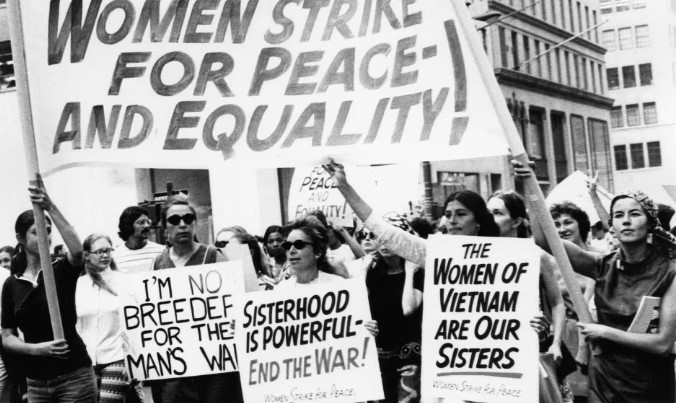The Women of NOW Review: Superb History of Feminist Growth and Groundswell
Originally published by Clara Bingham for The Guardian
What do a bestselling author, a segregationist congressman and a Black legal scholar have in common? Through a series of serendipitous events, Betty Friedan, Howard Smith and Pauli Murray lit fires that ignited the largest social revolution of the 20th century.
Friedan wrote the 1963 blockbuster The Feminine Mystique. Smith added “sex” to Title VII of the 1964 Civil Rights Act. In 1965, Murray wrote the first legal analysis comparing Jim Crow to gender discrimination. With the benefit of hindsight, this unwitting but timely partnership can be seen as the launchpad of the second wave feminist movement, a movement synonymous with the National Organization for Women, or NOW.
Almost 60 years after its inception, we think of NOW as a mainstream national feminist group. But in 1966 it was founded on the radical idea, as Katherine Turk describes it, “to organize and advocate for all women by channeling their efforts into one association that sought to end male supremacy”.
In a world where most women were denied credit cards and mortgages, entrance into marathon races, medical school and law school, jobs as bar tenders, editors, pilots, and factory managers, ending male supremacy seemed unfathomable.
Turk’s The Women of NOW is a fascinating account of the foundational organization that for many decades served as the central tentpole of this multifaceted movement. Despite the hundreds of books that make up the rich canon of modern women’s history, Turk has done a much-needed service, writing the first full history of NOW.
A professor at the University of North Carolina, Turk devoted 20 years, beginning with her undergraduate thesis, to telling this complex story. With gumshoe reporting precision, she traveled the country, unearthing hundreds of boxes and thousands of files that had been collecting dust in library archives. Combining this detailed documentary roadmap with interviews, Turk weaves the root story of an organization that drove the most transformative mass movement of the modern age.
Turk makes sense of NOW’s unwieldy geographic spread and 60-year history by telling it from the points of view of three very different leaders: Aileen Hernandez, Mary Jean Collins and Patricia Hill Burnett. Hernandez, an experienced Black union organizer, Collins, a young working-class political activist, and Burnett, a rich Detroit housewife and former Miss Michigan, personify the broad reach of the organization which tried, and sometimes failed, to represent all women.
Collins, who became president the Chicago chapter in 1968, greeted her new cause with giddy enthusiasm, saying joining NOW was “like waking up from a dead sleep, like ‘this is wrong; and everything is wrong.’ And away we went.” Their goal was nothing short of reprograming American society; revamping the way people lived, worked and loved.
Hernandez, the most professional of the three, was one of the first five commissioners of the Equal Employment Opportunity Commission. When the commission opened in 1965, its main mission was to strike down workplace race discrimination. To the surprise of its leaders, a third of complaints came from women. When the agency decided it would do nothing in response to complaints from stewardesses who were fired when they turned 32, and AT&T telephone operators denied higher-level jobs, it became clear to Washington insiders like Pauli Murray, Catherine East, Mary Eastwood and Sonia Pressman that the country needed a women’s version of the National Association for the Advancement of Colored People. On 30 June 1966, 28 women, with Friedan their fearless if flawed leader, created an organization to “bring women into full participation in the mainstream of American society and in truly equal partnership with men”. NOW was born.
